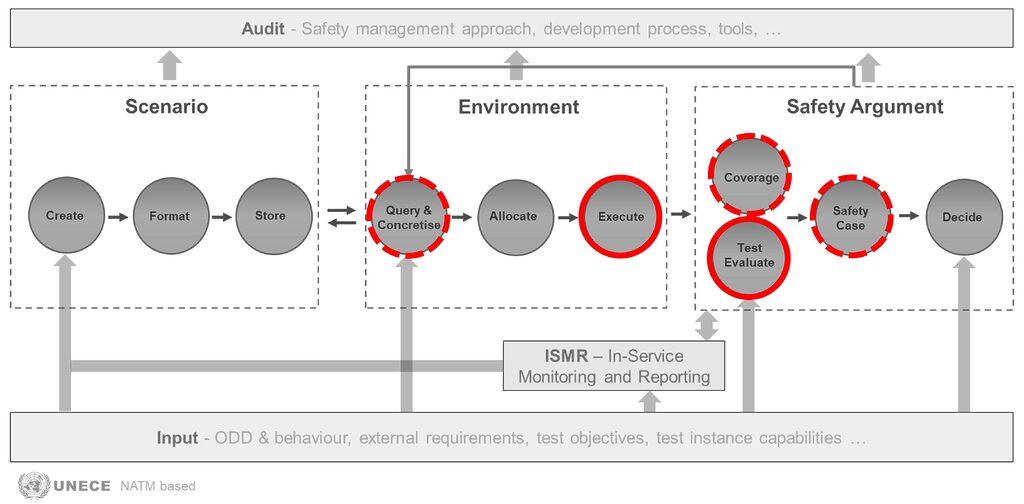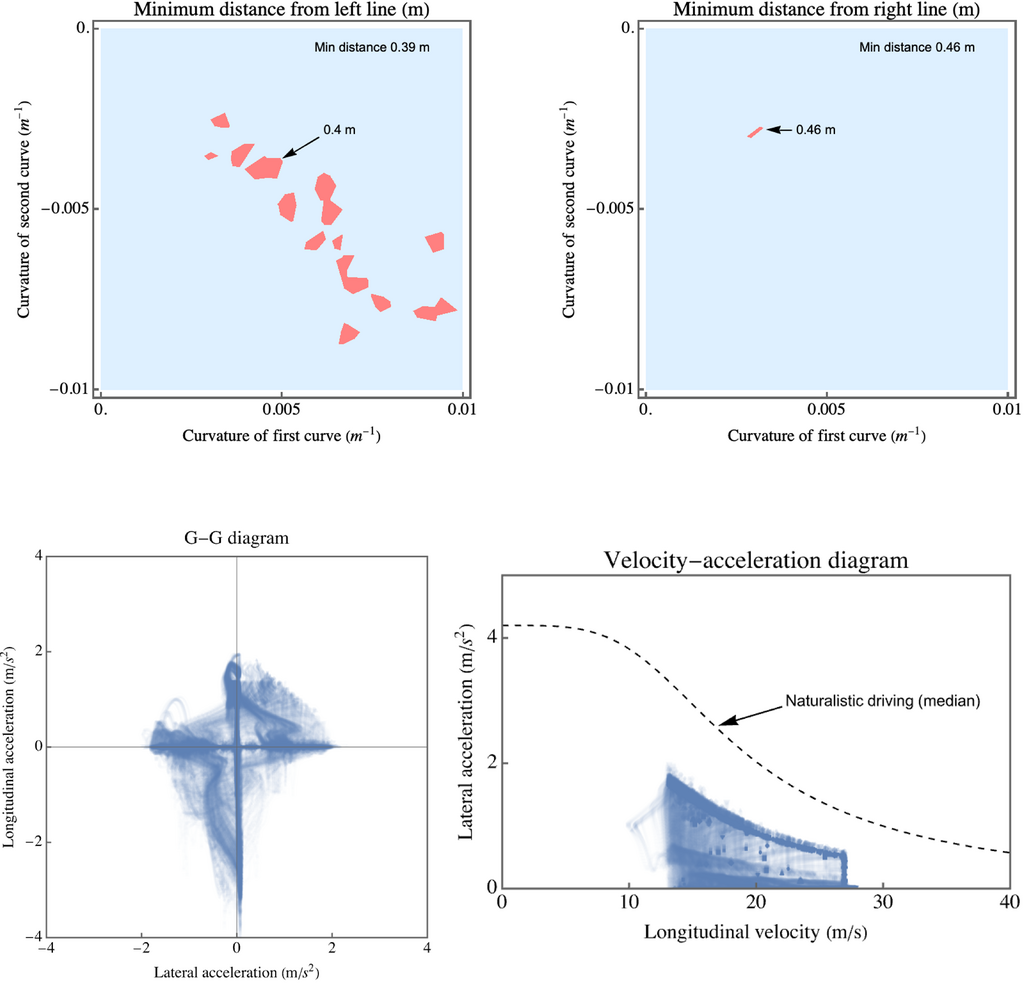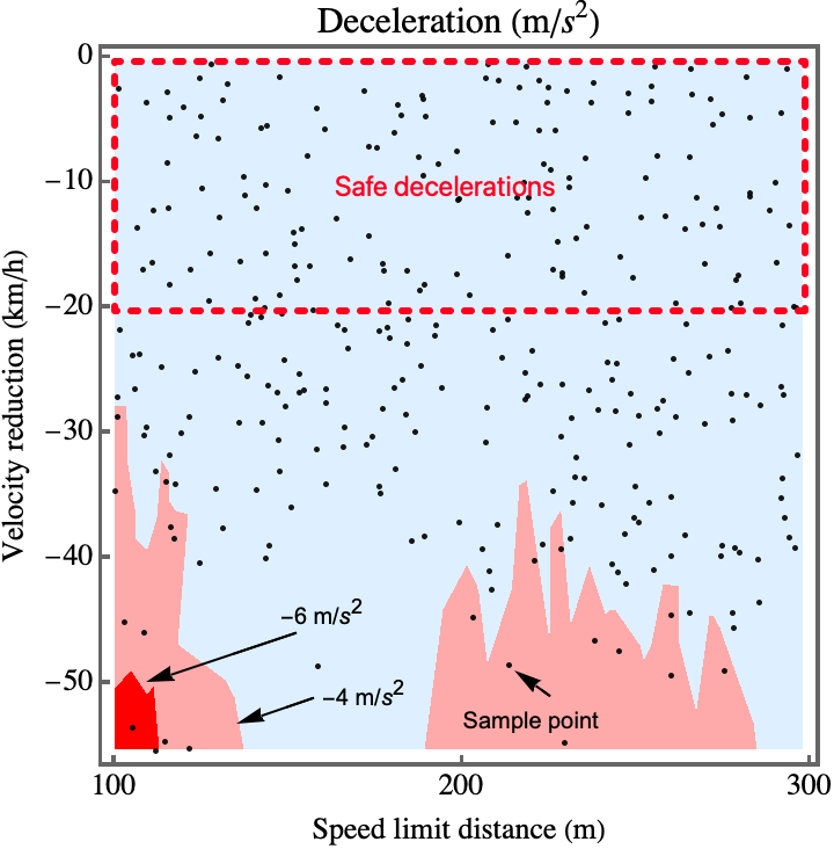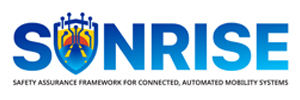UC3.1 – Map based perception & decision making
Use Case 3.1 involves testing the SUNRISE SAF with map-based AD functions for highway scenarios. The systems under test will include an advanced ACC/Highway Pilot designed to control longitudinal and lateral dynamics based on HD map data and onboard sensors.
Use case overview
There are two defined functional scenarios: 1) adapting speed to varying speed limits and 2) adapting speed to varying road curvature, using information from sensors and maps.
Objectives
Use the SAF to show how the safety and efficiency of map-based highway Automated Driving Systems can be demonstrated successfully.
SAF blocks demonstrated

Safety case setup
The test case is set up on a proving ground and as a virtual simulation in IPG CarMaker
Test environments
IPG CarMaker and Proving ground
Safety case building
The findings for UC3.1-B are as follows:
- The vehicle maintained a minimum distance of about 0.4 meters from lane edges while wandering
- Longitudinal and lateral accelerations are confirmed to be within a humanlike range using the GG diagram
- Speed choices in curves were also within the humanlike range
The system is safe because it remains within the lane and is perceived as safe because it meets humanly expected velocities and accelerations.

Similar findings hold for UC3.1-A:
The system is safe if the speed limits are spaced by at least 100 m and change in 20 km/h steps

Test scenarios selected
UC3.1-A
Several speeds of ego, distances to speed limit and speed limit changes (reduction and increase) are tested. Scenario tested in highway environment, the vehicle automatically adapts the speed without any risks to the speed limit ahead if it is lower than the ACC set-speed. The only action required to the driver is to accept the speed adaptation once requested, otherwise the speed limit is ignored.
UC3.1-B
Different curvature values are tested. In highway, the vehicle speed is adapted accordingly to the curvature ahead minimum allowed speed to be reached at the beginning of the curve and maintained for the whole curve length, no actions are required by the driver.
